• Cast Iron
6 Things You Should Never Cook In A Cast Iron Skillet

Reviewed by Trinity Anderson
Last Updated January 2024
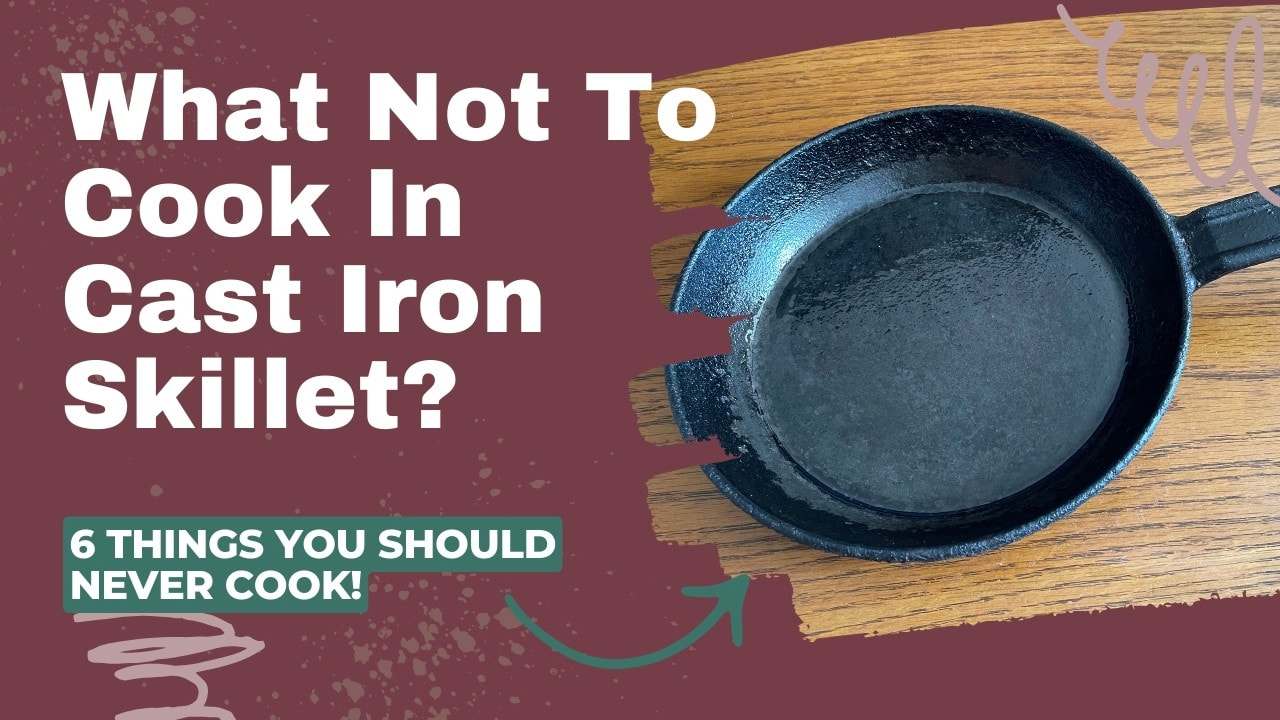
My cast iron skillet is truly remarkable in terms of its exceptional versatility, which is why I hold a deep affection for it. Regardless of the dish I'm preparing, it never fails to impress. However, occasionally I find myself pondering whether I am overburdening my cast iron by subjecting it to a wide range of ingredients. Having utilized my skillet for numerous years, often multiple times a day, I have come to realize that there are a few specific foods that do not fare well when cooked in cast iron. Consequently, I make a conscious effort to avoid using it for those particular dishes.
What Not to Cook in Cast Iron?
Regardless of whether you completely eliminate these food groups from your diet, it is essential to exercise caution when preparing the following foods in uncoated cast iron pans:
1. Acidic foods such as tomatoes and vinegar-based sauces.
2. Delicate foods like eggs and fish.
3. Foods that require flipping or tossing, such as pancakes, eggs, and fried rice.
4. Sugar, caramel, and candy.
5. Strongly flavored foods.
6. Oil with a low smoke point.
The guidelines for cooking with enameled cast iron vary, naturally, as the food does not come into direct contact with the iron in enameled cookware like Le Creuset.
Foods You Should Not Cook in a Cast Iron Pan (At Least Not Without Caution)
1. Acidic Foods
Acids found in certain foods such as tomatoes, wine, vinegar, and canned goods can react with cast iron. This reaction can cause the seasoning on the pan to erode and even break down the iron itself on a molecular level, although it doesn't happen instantly.
I personally tested my homemade tomato sauce and found it to be mildly acidic with a pH of 4.6. I had no issues simmering it in my cast iron for about 10 minutes. However, it's important to note that highly acidic foods like vinegar or lemon juice can easily strip the seasoning, allowing the acid to come into contact with the metal and potentially give your food a metallic taste.
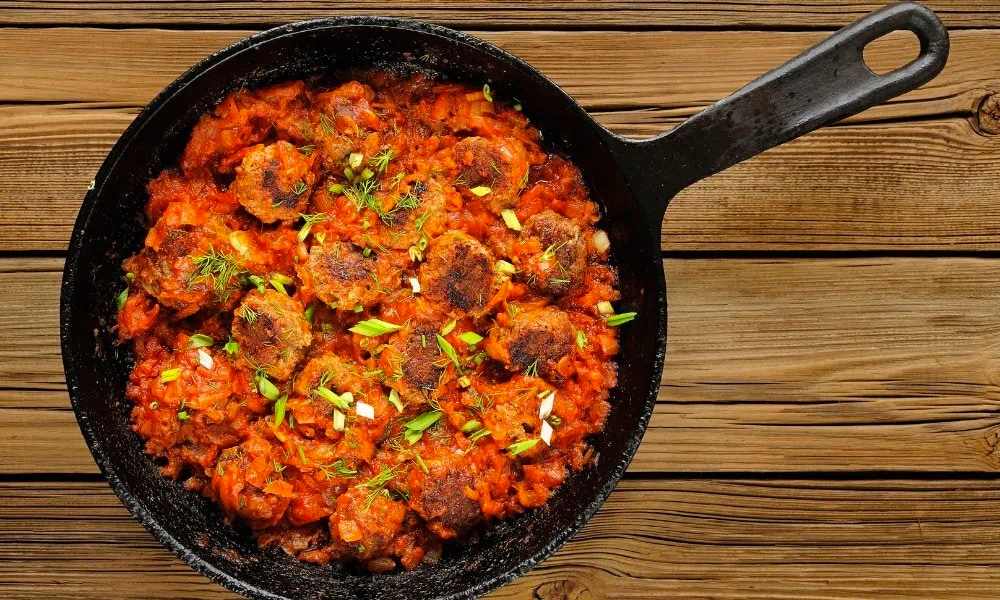
The effectiveness of the cast iron's resistance to acids depends on the thickness and smoothness of its seasoning. So, while you can still use it for dishes that include a tomato or two, it's advisable to switch to stainless steel or enameled cast iron when simmering or braising foods for a longer duration.
Additionally, it's crucial to never store acidic foods in your cast iron skillet. After cooking, transfer the food to another dish and promptly wash the iron pan.
2. Delicate Foods
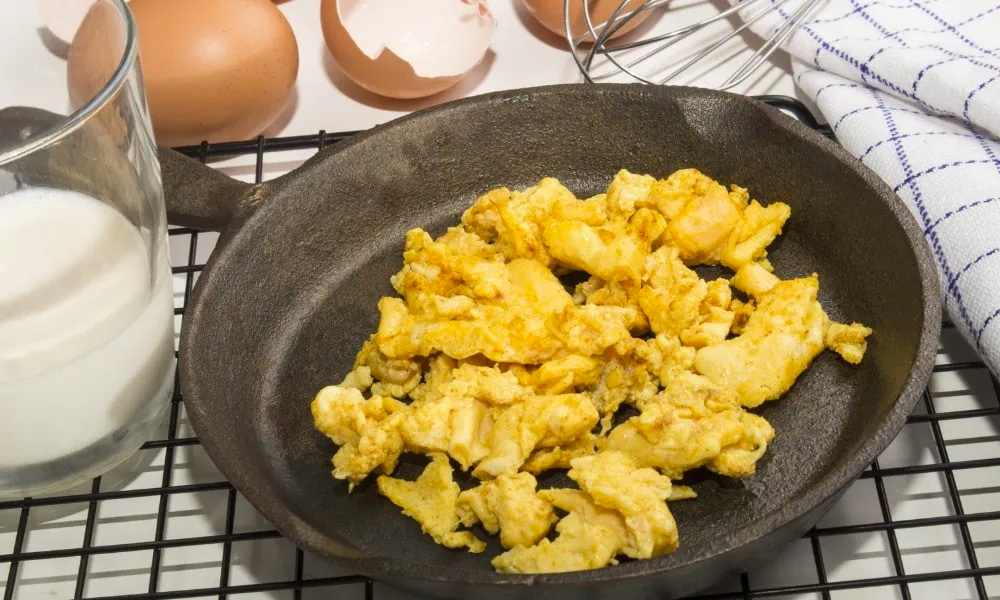
A well-seasoned cast iron skillet can provide a relatively nonstick surface if properly maintained, but it cannot match the consistent performance of a Teflon-coated pan. When it comes to delicate foods such as pancakes, fish, and omelets, it is rare to achieve a flawlessly clean result without any residue when using an iron skillet.
To avoid the potential frustration of your fish fillet or fried eggs sticking to the pan and becoming difficult to handle, it is advisable to opt for a genuine nonstick skillet.
3. Food You Want To Flip
Cast iron and the art of flipping food in a pan are both synonymous with a professional chef. However, these two elements do not complement each other. Cast iron, known for its weight, is not typically designed for the impressive wrist movements required to flip flapjacks high into the air.
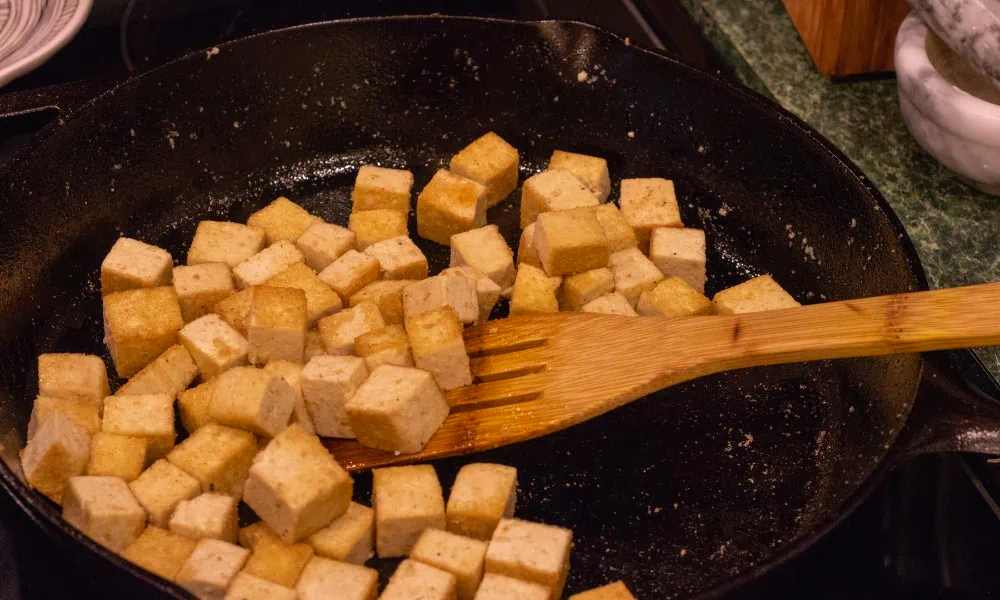
To achieve culinary excellence, it is recommended to utilize a spatula when sautéing or stir-frying in cast iron. For those captivating flips, opt for a lighter pan such as carbon steel.
4. Sugar, Caramel, Candy
Cookware with even heat distribution is essential for making candy or caramel. Surprisingly, cast iron does not meet this requirement as it tends to warm unevenly while reaching the desired temperature. Moreover, cast iron retains heat for a prolonged period of time, which can be detrimental to candy-making.
When working with sugar, it is crucial to have cookware that responds quickly. Candy-making allows no room for error, requiring immediate removal of the pan from heat and rapid temperature reduction once the confection reaches the perfect temperature, color, and texture. This is precisely why copper is the ideal choice for candy-making, while cast iron falls short.
5. Strongly Flavored Foods
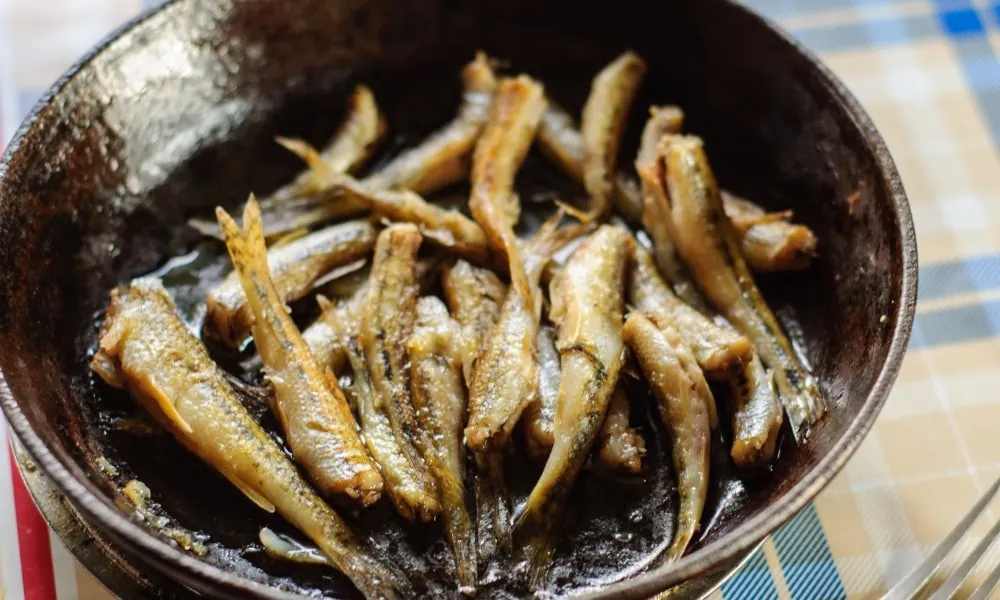
Would you like your breakfast pancakes to have the aroma of garlic? While I enjoy a savory crepe, I wouldn't go to that extent. Strong-smelling foods like garlic, curry, chilies, peppers, and others can leave their lingering aromas in the oils trapped on a cast iron pan, resulting in unwanted flavors for your next dish.
This may not be an issue if all your dishes have a similar flavor profile. However, if you use the pan for a variety of dishes, ranging from stews to baking bread, it's advisable to be cautious with these aromatic ingredients.
Furthermore, it's best to avoid cooking fish in a cast iron pan altogether. Instead, opt for stainless steel when preparing such foods.
6. Oil with Low Smoke Point
Cast iron cookware is widely preferred for high-heat cooking due to its thickness and durability. However, it is crucial to select the appropriate ingredients to ensure safe cooking at high temperatures. Among these ingredients, oil plays a vital role.
Using oils with low smoke points for high-heat cooking can lead to the oil burning and imparting unpleasant flavors to your food, resulting in a rancid taste.
Moreover, for optimal seasoning of your pan, it is recommended to utilize an oil with a high smoke point.
Other Common Mistakes With Using Cast Iron Pans
Cast iron is widely recognized as a highly durable material for cookware, yet it is not impervious to damage. To ensure optimal performance and avoid unnecessary complications, it is crucial to steer clear of these prevalent errors:
Heating the Pan Too Quickly
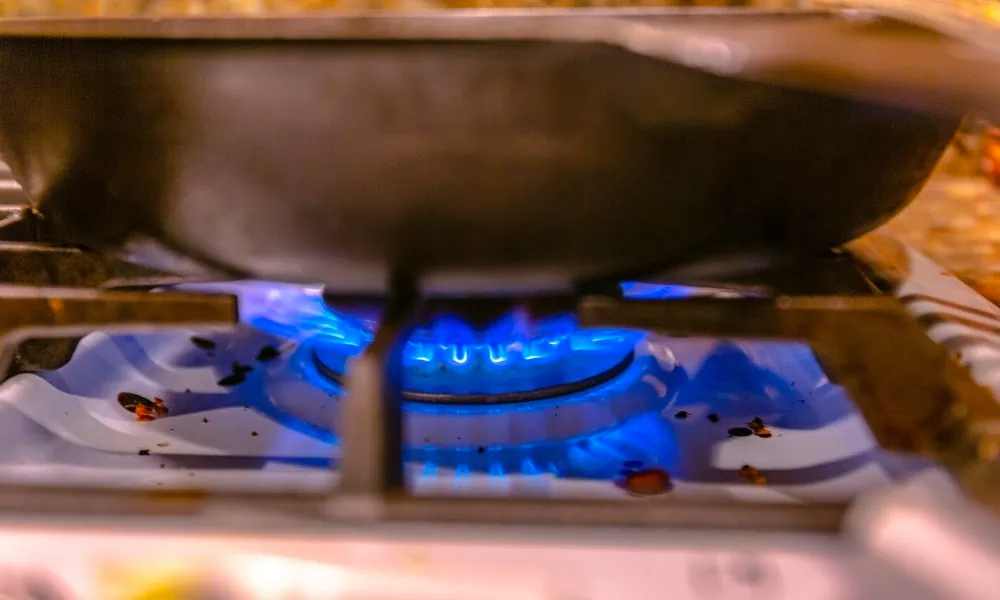
Cast iron does not distribute heat evenly. In order to prevent thermal shock, it is necessary to heat it in a manner that minimizes uneven hot and cold spots. One common mistake individuals make with cast iron is placing it directly on an electric or induction stove and immediately setting the heat to "high." This improper technique has resulted in cast iron skillets literally cracking in half!
Instead, it is advisable to take your time and initiate the heating process on low to medium heat. This is particularly crucial when using induction stoves, as they have the potential to excessively heat your cookware.
Soaking It In Water
After completing the cooking process, I have a personal preference of savoring my culinary masterpiece at a leisurely pace rather than hastily attending to the dishwashing task. Consequently, I tend to procrastinate and allow the pan to soak for a certain period of time. However, this approach is not suitable for cast iron cookware. The reason being that if iron is exposed to both water and oxygen, it will rapidly succumb to rusting, surpassing the speed at which one can utter the word "skillet." Therefore, it is imperative to refrain from immersing the pan in water and instead promptly wash and dry it immediately after cooking.
Washing It With Cold Water
It is important to wait for your cast iron pan to cool down before washing it, as washing a hot pan with cold water can cause thermal shock and potentially result in cracking or warping. To prevent rust, it is recommended to wash your cast iron pan after cooking, but make sure it has cooled down first. Use warm water to wash the pan once it has reached a safe temperature.
Not Drying it Completely
Another error that can result in rust on your cast iron pan is failing to properly dry it. After cleaning your cast iron pan, ensure that it is completely dry before storing it in a dry location.
Not Maintaining the Seasoning
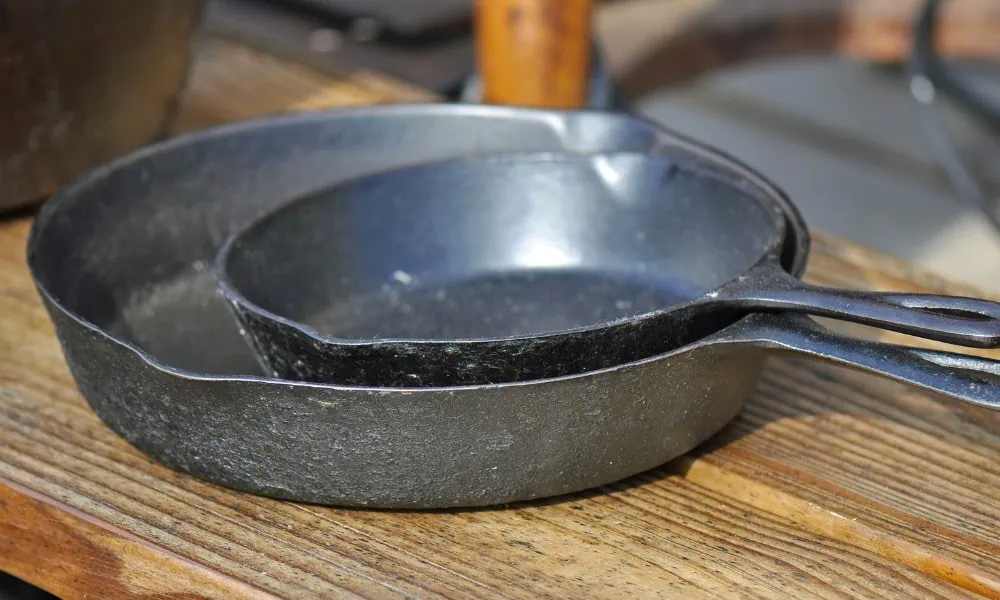
Failure to properly maintain the seasoning on your cast iron can result in the pan being susceptible to corrosion. This can lead to food sticking to the pan and potentially forming stubborn, carbonized residue. Additionally, it will cause the layers of hardened oil to become rough and uneven when you eventually re-season the pan. If you notice that your cast iron skillet appears dry or the protective coating seems thin, it is imperative to season it promptly.
Not Really Cleaning It Well
There is a heated discussion regarding the use of soap on cast iron pans, but I firmly believe in using it. Washing a cast iron pan with dish soap should not cause any major damage to its seasoning. The seasoning is composed of polymerized oil that is baked onto the surface of the pan, and it is so resilient that dish soap cannot break it down.
In my perspective, refraining from washing cast iron pans actually does more harm than good. Without thorough scrubbing and occasional use of soap, remnants of carbonized food and sticky oil accumulate on the pan's surface, which can negatively impact its cooking performance.
Conclusion
Cast iron is highly valued for its versatility and user-friendly nature. A properly seasoned cast iron can endure for a significant period of time without requiring any special maintenance, except for occasional reseasoning. Additionally, cast-iron skillets allow you to prepare a wide range of dishes. However, by practicing mindful cooking, you can extend its lifespan even more and enhance your culinary journey.